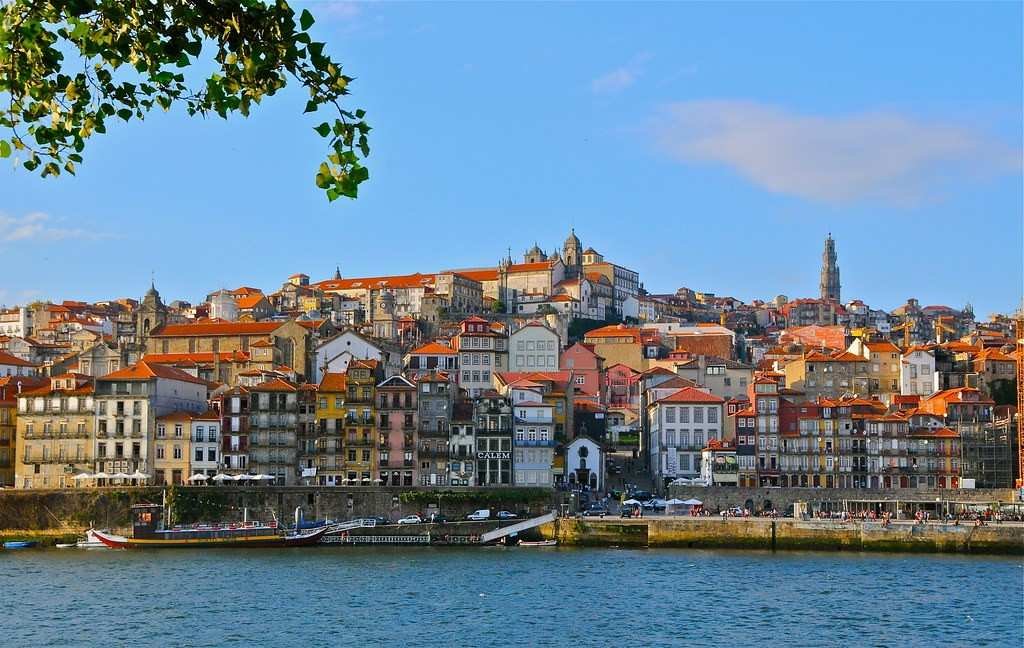Nestled across the Douro River from Porto, Vila Nova de Gaia is a hidden gem that requires less attention from the tour coming to Portugal. This colourful city with a long, exotic history, culture and incredible natural resources differs from the typical Miami Beach scene. If you are interested in wines or looking forward to a sultry coastline or Portuguese culture, you’ll always be happy visiting Vila Nova de Gaia.
A Rich Historical Legacy
The town of Vila Nova de Gaia has been significant for centuries, especially for wine commerce and navigation on the Douro River. These advantages made it the region most endowed with business, sp, specifically sh, building activities. Some of these are well illustrated by the architecture spread throughout the city, ranging from large monasteries to aged warehouses. Waking through the small, cobblestone-paved streets, it is as if one has walked through a time warp to witness the trading of spice and wine merchants governing the area’s fate.
Its most memorable contribution to literature is associated with enthusiasm for wines, specifically port wines. In the 17th century, the British started to ship fortified wine from the Douro Valley, and safely ageing, this valuable product was established in Vila Nova Gaia. At this time, most of the wine cellars you can observe today were founded, and the fact that most of them are still in business is a sign of the city’s longevity.
The Importance of the Douro River
Vila Nova de Gaia has benefited from its location along the Douro River, one of the picturesque rivers in Portugal. Instead of just economically contributing, the river has helped frame the city’s identity. In the past, it was a transport corridor for commerce, especially wine from the Douro Valley to the coast.
They were initially built to carry barrels of wine from the vineyards up the river to the cellars in Gaia. Now, they are an opportunity for a successful boat journey exploring the views of both sides of Gaia and Porto and the Dom Luís I bridge that unites the two cities.

Wine Cellars: A Journey Through Port Wine
For wine enthusiasts, a visit to the historical town will only be complete with a visit to central wine cellars in Vila Nova de Gaia, where Port wine is matured and stored. Trento is also blessed with distinguished wineries that make visitors enumerate the pleasure of seeing a city that hosts winemaking. Tourists are allowed to take guided tours that explain the processes of winemaking from the point of cultivation of grapes to the actual ageing of wine in small oak barrels.
They are Taylor’s, Sandeman and Graham’s cellars, which have been in business for many years. When you are out of these group tours, you will be able to meet the history of Port and take a dig at different varieties of the ruby port to the tawny Port with agedogy. Ironically, it served as a transport route for goods, particularly wine, from the Douro Valley to the Atlantic coast.
The Scenic Cais de Gaia Waterfront
The riverside walkway called Cais de Gaia is easily one of the most attractive places in northern Portugal. This area of great tourist attraction is active with activities such as walking, riding, shopping, sitting at one of the cafes or restaurants, or watching performers while enjoying your favourite meal. While walking, you can also see the beautiful Ribeira district on the other side of the river and the impressive Dom Luís I bridge in between.
Cais de Gaia is also an ideal place to rent a river boat for a Douro River cruise or just to sit at any river-side fish and catfish restaurants where you can order fresh sea foods and traditional Portuguese foods. At night, you get music and lights, and you can even smell the aroma of roasted sardines in the air. It is a tour with the beauty of the flowing river and the energy of a fantastic city.
One of the region’s finest vantage points is found at the Serra do Pilar Monastery seat. This monastery sits atop a hill with views of both Vila Nova de Gaia and Porto, and the Douro River is in a loop, touching both sides. Officially listed as a World Heritage, the circular church of the monastery is architectural eye candy, but the showstopper is the view.
The views from there, whether in the morning or evening, are spectacular, the most famous being Serra do Pilar. You can look at the moonlight along the river, at the red roofs of the Ribeira and the hills of the Douro Valley. It even became popular with tourists who want to photograph everything that represents northern Portugal in such a landscape.
Pristine Beaches Along the Coast
Besides being famous for being associated with the wine business, Vila Nova de Gaia has a beautiful seashore and stony beach. Gaia’s soil borders the Atlantic Ocean, and as such, it has a rich sandy coast, which is a go-to place to take a sun bath or to practice surfing and paddle boarding.
The two significant beaches in Sao Miguel are Praia Municipal de Olhos de Água, Praia de Lavadores, and Praia da Madalena. The enclosed beaches combine an untouched natural setting and comfort with cafes, bars and seafood restaurants directly on the shore. Whether you want a leisurely sunbathing on the sand or a water sporting day on the seaside, Gaia’s beaches offer exactly what one needs to escape the city’s concrete jungle.

Culinary Adventures: Savoring Local Flavors
Gaia is better known for its food, with many Restaurants in this place that epitomize the north of Portugal. Seafood dominates this diet; fish and shrimp barbeques, grills and steams from the day’s catches are typical in restaurants in the city. This is served alongside meats, melted cheese, and a spicy sauce and may be served with chips. It is famous in Porto as Francesinha.
Dessert should not be missed, and the best of Portugal’s offerings are pastéis de nata, the famous custard tarts best paired with coffee or Port wine. But the city’s food markets more than makeup for it, brimming with local specialities, whether cheeses and cured meats or pastries and bread. To get an authentic experience of Gaia’s flavour, one can always go to a Tasca, a tavern where locals eat out.
Cultural Highlights
Apart from wine and local food, there are numerous opportunities to inspire yourself with art and explore the history of Vila Nova de Gaia. For instance, the Teixeira Lopes Museum covers many sculptures and paintings of one of the most famous Portuguese sculptors and painters. They also have several festivals and events within the given year, such as music concerts, art exhibitions, and wine fairs,
Indeed, the most eagerly awaited event is the Festa de São João, which is held in June and is a rather cheerful feast. The festival involves colourful parades, cultural music, dancing, and fireworks displays to the great delight of the thousands who throng the festival from different parts of the country. Regardless of whether your kind of art is contemporary or ancient, Gaia’s cultural year is eventful, with programs that suit any preference.
Conclusion
From exquisite history and natural splendour to delicious wine, Vila Nova de Gaia is an exciting destination that can attract many tourists to visit Portugal. From the pristine coastline to the cheerful riverside walk, this city caters to every kind of tourist. Spend as much time as possible to go deeper into its wine shops and taste local dishes and customs. Vila Nova de Gaia can be viewed as a genuine entrance to the most fascinating destination in Portugal.
FAQs
Reasons why Vila Nova de Gaia is famous?
Vila Nova de Gaia is well known for Port wine lodges and beautiful river views.
How to go to Nova de Gaia from Porto?
Visiting Vila Nova de Gaia is accessible by foot, metro, or car using the Dom Luís I Bridge.
Are there any beaches in Vila Nova de Gaia?
In Vila Nova de Gaia, beautiful beaches include Praia de Lavadores and Praia da Madalena.
Is a wine cellar tour in Vila Nova de Gaia possible?
Most Vila Nova de Gaia wine cellars provide wine-tasting sessions and let visitors watch the process.
What are the worth visiting places in Vila Nova de Gaia?
These sites are recommended: the wine cellars, Cais de Gaia & Serra do Pilar Monastery.












